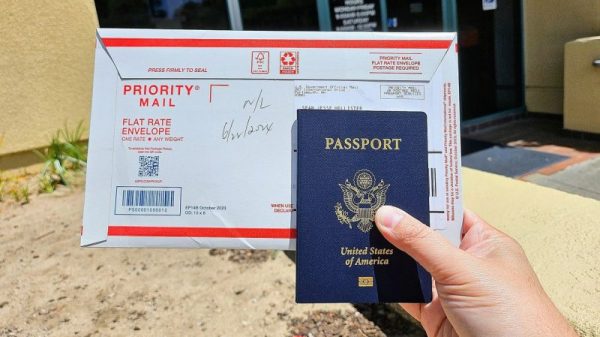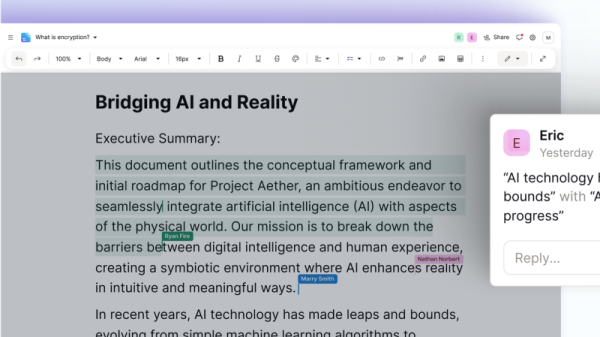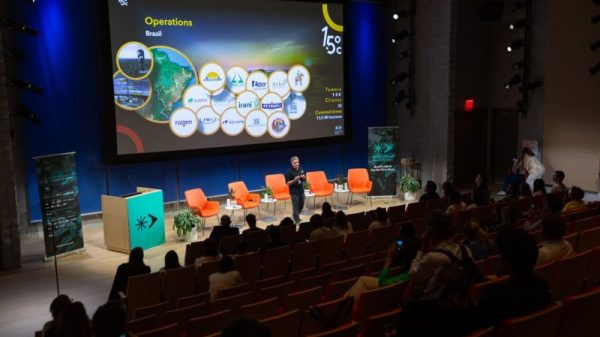“The numbers are not going down. CBP’s One app shell game, not releasing the OFO numbers, moving the numbers from crossing over to the ports of entry and then getting automatic parole to those individuals.”
— Rep. Mark Green (R-Tenn.), chairman of the House Homeland Security Committee, July 19
“That’s the shell game. They’ve simply taken those that were previously illegally here in between the ports of entry, and now they just shepherd them to the ports of entry, release them and they’re calling the victory.”
— Former acting commissioner of U.S. Customs and Border Protection Mark Morgan, in an interview with Just the News, July 20
Ever since the southern border became “eerily quiet” after a policy shift by the Biden administration, Republicans have charged that officials are playing a “shell game” with the numbers.
A shell game usually involves sleight of hand to trick players, but in politics, the phrase refers to deceptive actions used to hide bad news or figures. Twice in a recent hearing, Green incorrectly claimed the administration was not releasing “OFO numbers,” referring to Office of Field Operations data — encounters with undocumented immigrants at ports of entry, as opposed to people caught crossing the border by U.S. Border Patrol agents. In reality, those numbers are being released.
Morgan, in an interview, said he was not accusing the administration of hiding data. “The data is usually there,” he said, but instead he believes the administration is engaging in what he called a “messaging shell game” that is misleading the public about border encounters with migrants seeking to enter the country.
Let’s unpack what’s going on.
The surge of undocumented immigrants at the southern border since early 2021 has been a major political headache for the Biden administration — and a major attack line for Republicans. When the administration in May ended a Trump-era pandemic policy known as Title 42, which had allowed for quick expulsions of migrants who entered the country illegally, the GOP was flummoxed when the number of encounters on the southern border suddenly dropped. Wouldn’t more migrants attempt to enter if they weren’t going to be expelled summarily?
“CBP’s total encounters along the Southwest border in June were the lowest in over two years, dropping nearly a third from May,” CBP said in its news release on the June numbers. The release added that “the U.S. Border Patrol recorded 99,545 encounters between ports of entry along the Southwest border: a 42 percent decrease from May 2023.”
About a third of the encounters were with Mexican nationals, while just over 22,000 were from the “Northern Triangle” countries of El Salvador, Guatemala and Honduras. That means the remaining 43,000 came from other countries, primarily Venezuela, Colombia, Brazil, India and China, signaling the continuing shift from the primarily Mexican migration of the past.
About 36,000 were released on their recognizance, down from nearly 70,000 in May, CBP said. Many of the rest were detained, slated for expedited removal or agreed to a voluntary return to Mexico. Voluntary returns, in fact, showed a tenfold increase in May and June compared to early months in the year.
Month by month, numbers can be an unreliable snapshot. May is often the month that migrants surge to the border, hoping to avoid the heat of the summer.
Still, the June showing was the best for this metric since February 2021, when border agents encountered 97,643 people seeking to cross the border. That was also President Biden’s first full month in office.
But Border Patrol encounters make up a narrow metric — people crossing between ports of entry (such as deserts and rivers) on the southern border who are greeted by Border Patrol agents who wear green uniforms. Remember how Green complained about the OFO numbers? Office of Field Operations refers to people encountered at ports of entry by CBP officers who wear blue uniforms. That number, by contrast, has soared in recent months. In June, 45,026 people showed up at ports of entry, compared to 26,112 in February.
The shift has come about because the administration has introduced the mobile app CBP One, which allows migrants and asylum seekers to book an appointment to be processed at ports of entry. The move is intended to discourage people from taking the dangerous route between ports of entry — though it still means many take a difficult route through Mexico and often wait weeks or months for an appointment. As of July 1, the administration is processing 1,450 people a day through the app, with many released into the country. (A federal judge this week struck down the administration’s restrictions on seeking asylum between ports of entry.)
For the first nine months of fiscal 2022, OFO recorded almost 114,000 encounters at ports of entry. For the first nine months of fiscal 2023, that figure has risen more than 276,000 — almost a 150 percent increase.
Meanwhile, encounters with Border Patrol agents on the southwest border fell to 1.5 million from 1.6 million in the same period. (The BP figures before May, however, are affected by high recidivism — migrants who repeatedly sought to enter the United States after being expelled by Title 42.)
Another big shift in the numbers was engineered through increased use of a process known as parole, especially for migrants from Venezuela, Cuba, Haiti and Nicaragua. Biden in October announced the policy for Venezuela and then expanded it to the other countries in January. Many of these people now are not coming through the southern border at all but are taking flights to interior or coastal cities. That’s in part because under parole they have advance travel authorizations, having been vetted and placed with a sponsor. (People from these countries who try to cross the border without the proper paperwork are ineligible for parole and subject to expulsion.) Since the CBP dashboard only breaks down data for the southern and northern borders, it requires a bit of math to come up with numbers for other ports of entry.
Our calculations show that in the first nine months of this fiscal year, nearly 164,000 people from those four countries entered the United States at interior or coastal cities, compared to about 3,000 a year in 2020, 2021 and 2022. That’s led to a sharp drop in people from those countries attempting to enter the country illegally between ports of entry on the southern border — about 323,000 in the first nine months of fiscal 2023, compared to more than 600,00o in fiscal 2022.
The net result of these policy shifts is that the headline number — people encountered by Border Patrol at the southern border — has begun to decline. But whether that is a “shell game” is in the eye of the beholder.
House Homeland security staff argue that the CBP One app was intended for legitimate trade and travel, primarily to allow brokers, carriers and forwarders to request an inspection appointment time for perishable cargo entering the United States. But now, under the administration’s policies, otherwise inadmissible migrants are given appointments and released into the interior. That means the monthly numbers that the media usually focuses on — illegal crossings between ports of entry — have fallen.
“This Committee has heard from several agents that they were told to tell migrants between ports of entry to ‘voluntary return/withdrawal’ and then use the CBP One app where they would be allowed to skip to the front of the line as long as they come back and turn themselves into a POE,” a committee staff member said in an email. “We heard this directly from Border Patrol agents — not DHS.”
DHS officials reject claims of a “shell game,” saying all the relevant numbers are made public on the CBP’s website. The only difference is that the numbers that Republicans previously cited as showing an emergency have now fallen dramatically.
As for the app, officials say there is nothing that precludes adding functionality to ensure a more orderly process at the border. This system directs more people to ports of entry, which allows for a safer crossing — a point made in 2018 by Ronald D. Vitiello, then a top CBP official under President Donald Trump: “We think that [port of entry] is better for everyone …. It is a safer condition. They don’t have to go into the hands of a smuggler.”
During the Biden administration there has been a sharp increase in migrant deaths along the border. At least 853 migrants died trying to cross the U.S.-Mexico border unlawfully in fiscal year 2022, a record high — and up from 546 in 2021 and 247 in 2020, CBS News reported.
People using the app still may face a difficult journey through Mexico to get to the border. A DHS official said that people using the app currently are waiting about eight weeks to secure an appointment.
To the frustration of Republicans, the Biden administration has managed to reduce the headline numbers along the border. That’s no excuse for repeatedly suggesting, as Green did, that the numbers have not been properly released. The numbers are there, no matter how painful they may be to the administration’s critics.
In the first seven weeks of the post-Title 42 environment, CBP data suggests a slight decrease in migrants seeking to enter and a more orderly process in place as the CBP One app has sent more migrants to ports of entry.
But now a federal judge’s ruling has put the administration’s policies in doubt — and hundreds of thousands of people a month are still seeking refuge in the United States.
(About our rating scale)
Send us facts to check by filling out this form
Sign up for The Fact Checker weekly newsletter
The Fact Checker is a verified signatory to the International Fact-Checking Network code of principles
“The numbers are not going down. CBP’s One app shell game, not releasing the OFO numbers, moving the numbers from crossing over to the ports of entry and then getting automatic parole to those individuals.”
— Rep. Mark Green (R-Tenn.), chairman of the House Homeland Security Committee, July 19
“That’s the shell game. They’ve simply taken those that were previously illegally here in between the ports of entry, and now they just shepherd them to the ports of entry, release them and they’re calling the victory.”
— Former acting commissioner of U.S. Customs and Border Protection Mark Morgan, in an interview with Just the News, July 20
Ever since the southern border became “eerily quiet” after a policy shift by the Biden administration, Republicans have charged that officials are playing a “shell game” with the numbers.
A shell game usually involves sleight of hand to trick players, but in politics, the phrase refers to deceptive actions used to hide bad news or figures. Twice in a recent hearing, Green incorrectly claimed the administration was not releasing “OFO numbers,” referring to Office of Field Operations data — encounters with undocumented immigrants at ports of entry, as opposed to people caught crossing the border by U.S. Border Patrol agents. In reality, those numbers are being released.
Morgan, in an interview, said he was not accusing the administration of hiding data. “The data is usually there,” he said, but instead he believes the administration is engaging in what he called a “messaging shell game” that is misleading the public about border encounters with migrants seeking to enter the country.
Let’s unpack what’s going on.
The surge of undocumented immigrants at the southern border since early 2021 has been a major political headache for the Biden administration — and a major attack line for Republicans. When the administration in May ended a Trump-era pandemic policy known as Title 42, which had allowed for quick expulsions of migrants who entered the country illegally, the GOP was flummoxed when the number of encounters on the southern border suddenly dropped. Wouldn’t more migrants attempt to enter if they weren’t going to be expelled summarily?
“CBP’s total encounters along the Southwest border in June were the lowest in over two years, dropping nearly a third from May,” CBP said in its news release on the June numbers. The release added that “the U.S. Border Patrol recorded 99,545 encounters between ports of entry along the Southwest border: a 42 percent decrease from May 2023.”
About a third of the encounters were with Mexican nationals, while just over 22,000 were from the “Northern Triangle” countries of El Salvador, Guatemala and Honduras. That means the remaining 43,000 came from other countries, primarily Venezuela, Colombia, Brazil, India and China, signaling the continuing shift from the primarily Mexican migration of the past.
About 36,000 were released on their recognizance, down from nearly 70,000 in May, CBP said. Many of the rest were detained, slated for expedited removal or agreed to a voluntary return to Mexico. Voluntary returns, in fact, showed a tenfold increase in May and June compared to early months in the year.
Month by month, numbers can be an unreliable snapshot. May is often the month that migrants surge to the border, hoping to avoid the heat of the summer.
Still, the June showing was the best for this metric since February 2021, when border agents encountered 97,643 people seeking to cross the border. That was also President Biden’s first full month in office.
But Border Patrol encounters make up a narrow metric — people crossing between ports of entry (such as deserts and rivers) on the southern border who are greeted by Border Patrol agents who wear green uniforms. Remember how Green complained about the OFO numbers? Office of Field Operations refers to people encountered at ports of entry by CBP officers who wear blue uniforms. That number, by contrast, has soared in recent months. In June, 45,026 people showed up at ports of entry, compared to 26,112 in February.
The shift has come about because the administration has introduced the mobile app CBP One, which allows migrants and asylum seekers to book an appointment to be processed at ports of entry. The move is intended to discourage people from taking the dangerous route between ports of entry — though it still means many take a difficult route through Mexico and often wait weeks or months for an appointment. As of July 1, the administration is processing 1,450 people a day through the app, with many released into the country. (A federal judge this week struck down the administration’s restrictions on seeking asylum between ports of entry.)
For the first nine months of fiscal 2022, OFO recorded almost 114,000 encounters at ports of entry. For the first nine months of fiscal 2023, that figure has risen more than 276,000 — almost a 150 percent increase.
Meanwhile, encounters with Border Patrol agents on the southwest border fell to 1.5 million from 1.6 million in the same period. (The BP figures before May, however, are affected by high recidivism — migrants who repeatedly sought to enter the United States after being expelled by Title 42.)
Another big shift in the numbers was engineered through increased use of a process known as parole, especially for migrants from Venezuela, Cuba, Haiti and Nicaragua. Biden in October announced the policy for Venezuela and then expanded it to the other countries in January. Many of these people now are not coming through the southern border at all but are taking flights to interior or coastal cities. That’s in part because under parole they have advance travel authorizations, having been vetted and placed with a sponsor. (People from these countries who try to cross the border without the proper paperwork are ineligible for parole and subject to expulsion.) Since the CBP dashboard only breaks down data for the southern and northern borders, it requires a bit of math to come up with numbers for other ports of entry.
Our calculations show that in the first nine months of this fiscal year, nearly 164,000 people from those four countries entered the United States at interior or coastal cities, compared to about 3,000 a year in 2020, 2021 and 2022. That’s led to a sharp drop in people from those countries attempting to enter the country illegally between ports of entry on the southern border — about 323,000 in the first nine months of fiscal 2023, compared to more than 600,00o in fiscal 2022.
The net result of these policy shifts is that the headline number — people encountered by Border Patrol at the southern border — has begun to decline. But whether that is a “shell game” is in the eye of the beholder.
House Homeland security staff argue that the CBP One app was intended for legitimate trade and travel, primarily to allow brokers, carriers and forwarders to request an inspection appointment time for perishable cargo entering the United States. But now, under the administration’s policies, otherwise inadmissible migrants are given appointments and released into the interior. That means the monthly numbers that the media usually focuses on — illegal crossings between ports of entry — have fallen.
“This Committee has heard from several agents that they were told to tell migrants between ports of entry to ‘voluntary return/withdrawal’ and then use the CBP One app where they would be allowed to skip to the front of the line as long as they come back and turn themselves into a POE,” a committee staff member said in an email. “We heard this directly from Border Patrol agents — not DHS.”
DHS officials reject claims of a “shell game,” saying all the relevant numbers are made public on the CBP’s website. The only difference is that the numbers that Republicans previously cited as showing an emergency have now fallen dramatically.
As for the app, officials say there is nothing that precludes adding functionality to ensure a more orderly process at the border. This system directs more people to ports of entry, which allows for a safer crossing — a point made in 2018 by Ronald D. Vitiello, then a top CBP official under President Donald Trump: “We think that [port of entry] is better for everyone …. It is a safer condition. They don’t have to go into the hands of a smuggler.”
During the Biden administration there has been a sharp increase in migrant deaths along the border. At least 853 migrants died trying to cross the U.S.-Mexico border unlawfully in fiscal year 2022, a record high — and up from 546 in 2021 and 247 in 2020, CBS News reported.
People using the app still may face a difficult journey through Mexico to get to the border. A DHS official said that people using the app currently are waiting about eight weeks to secure an appointment.
To the frustration of Republicans, the Biden administration has managed to reduce the headline numbers along the border. That’s no excuse for repeatedly suggesting, as Green did, that the numbers have not been properly released. The numbers are there, no matter how painful they may be to the administration’s critics.
In the first seven weeks of the post-Title 42 environment, CBP data suggests a slight decrease in migrants seeking to enter and a more orderly process in place as the CBP One app has sent more migrants to ports of entry.
But now a federal judge’s ruling has put the administration’s policies in doubt — and hundreds of thousands of people a month are still seeking refuge in the United States.
(About our rating scale)
Send us facts to check by filling out this form
Sign up for The Fact Checker weekly newsletter
The Fact Checker is a verified signatory to the International Fact-Checking Network code of principles























